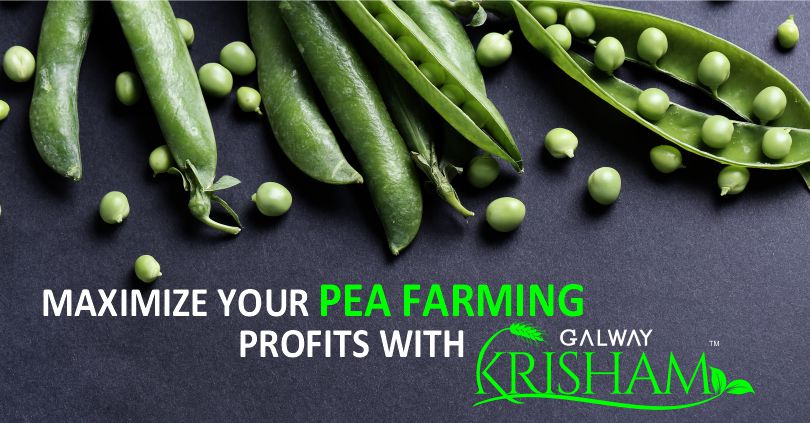
September 30, 2023 11:21 Created by Rajesh Kumar Yadav, Last modified on September 30, 2023 11:21
Peas are one of the profitable pulse crops grown in India. Its green pods are commonly used for making vegetables, and dried peas are used for making lentil. Pea cultivation is a highly profitable crop for farmers in India, as it offers good returns at relatively low production costs. By cultivating peas, farmers can earn a decent income and ensure the nutrition of their families.
According to a news article published on commoditiescontrol.com, the production of peas in India is 7.8 lakh metric tons, with Uttar Pradesh leading in production. Here in India, peas contribute to 60% of the total production. As per a news report on aajtak.com, peas are rapidly becoming a high-profit crop across the country due to low production costs.
Pea cultivation is considered suitable for a cool and temperate climate. It is grown in several states in India, including Uttar Pradesh, Punjab, and Haryana.
Some of the main pea varieties cultivated are Jawahar, Matar-4, Arkel, Kashi Mukti, Kashi Uday, Pant Upahar, and P-8.
Pea farming with Galway Krisham-
• Before ploughing, mix 1-liter G-Bio Phosphate with 10 kg G-Sea Power or 10 kg G-Prom Advance in 100 kg rotted cow dung manure/earthworm manure/ash/friable soil.
• At the time of seed treatment, apply 4-5 ml. G-Potash Advance per kg of seed with light watering.
• Before first irrigation in the field, take Urea+DAP as required + 10 kg G-Sea Power + 4 kg G-VAM mixed together and use in the field at the rate of per acre.
• Before the second irrigation in the field, take urea as per requirement + mix 10 kg G-Sea Power + 200 ml G-Bio Humic and 200 ml G-Sea Liquid 4 kg mix together and use it in the field at the rate of per acre.
• Before or after flowering, mix 10-15 ml G-Sea liquid and 10-15 ml G-Bio Humic in 15 liters of water and spray it according to half an acre.
• Before or after fruit ripening, spray 10-15 ml G-Amino Plus in 15 liters of water.
Farmers, if you practice the above-mentioned methods for pea cultivation, not only will your pea crop be better and more productive, but it will also be protected from diseases like powdery mildew, aphids, whitefly, leaf curl, leaf spot, rust, and wilt.

